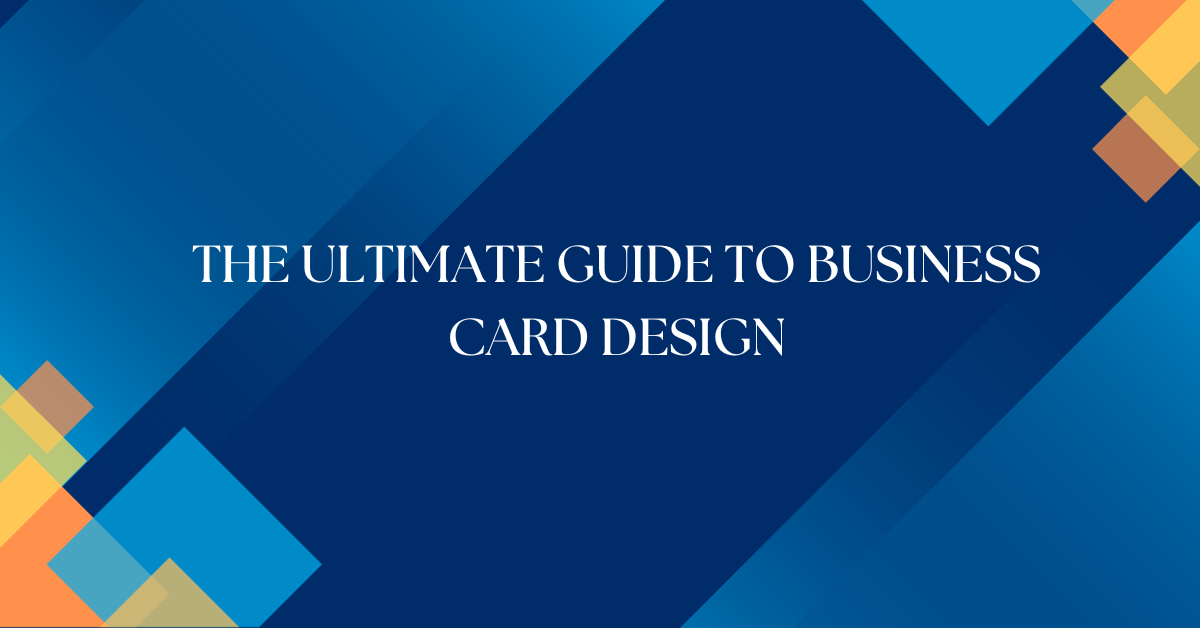In the fast-paced world of business, first impressions matter more than ever. One powerful tool that can leave a lasting impact is a well-designed business card. A carefully crafted business card not only provides essential contact information but also serves as a tangible representation of your brand. In this ultimate guide, we’ll explore the key elements of effective business card design, offering valuable tips and inspiration to help you make a memorable impression.
Understanding the Basics:
Before delving into the creative aspects, it’s crucial to understand the fundamental elements of a business card. Standard dimensions, paper quality, and essential information such as your name, title, company name, and contact details should be clearly presented. Ensure that the text is legible and the overall design complements your brand’s aesthetic.
Reflecting Your Brand Identity:
Your business card should seamlessly integrate with your overall brand identity. Consider incorporating your brand colors, logo, and typography to reinforce brand recognition. Consistency across all your marketing materials builds a cohesive and professional image.
Choosing the Right Typography:
Selecting the appropriate fonts for your business card is essential. Opt for clean, readable fonts that reflect your brand’s personality. Experiment with font sizes to emphasize key information, ensuring that the text is easy to read at a glance.
Strategic Use of Colors:
Colors evoke emotions and convey messages. Choose colors that align with your brand and resonate with your target audience. Consider the psychological impact of colors; for example, blue may convey trust, while red can evoke energy and passion.
Creative Layouts and Formats:
Break away from the traditional rectangular business card and explore creative layouts and formats. Die-cutting, rounded corners, and unique shapes can make your card stand out. However, always balance creativity with professionalism to maintain a polished look.
Incorporating Visual Elements:
A well-chosen image or graphic can enhance the visual appeal of your business card. Whether it’s a professional photo, an icon representing your industry, or a subtle background pattern, visual elements can add interest and make your card memorable.
Whitespace Matters:
Don’t underestimate the power of whitespace. A cluttered business card can be overwhelming and difficult to read. Use whitespace strategically to highlight key information and create a visually pleasing layout.
Finishing Touches:
Consider adding special finishes like embossing, foil stamping, or spot UV coating to add a tactile and luxurious feel to your business card. These finishes not only enhance the overall aesthetics but also make your card more memorable.
Double-Check for Errors:
Before sending your business card for printing, double-check all the details for accuracy. Typos or incorrect contact information can undermine the professionalism of your card.
Staying Updated:
As design trends evolve, so should your business card. Periodically review and update your card to ensure it remains current and relevant to your brand.
Conclusion:
Crafting an effective business card involves a thoughtful blend of creativity, professionalism, and attention to detail. By following the tips outlined in this ultimate guide, you’ll be well-equipped to design a business card that not only communicates essential information but also leaves a lasting and positive impression on those you encounter in the business world. Elevate your brand and make your mark with a business card that truly stands out.
FAQ:
- Q1: How important is business card design for branding?
- A: Business card design is crucial for branding as it serves as a tangible representation of your brand. A well-designed card reinforces brand identity and makes a lasting impression.
- Q2: What information should be included on a business card?
- A: Essential information includes your name, title, company name, and contact details. Ensure clarity and legibility for effective communication.
- Q3: Are there specific fonts that work best for business cards?
- A: Opt for clean, readable fonts that align with your brand’s personality. Experiment with font sizes to emphasize key information without sacrificing legibility.
- Q4: How can I incorporate my brand colors into the business card?
- A: Use your brand colors for text, background, or accents. Consistent color choices across all materials strengthen brand recognition.
- Q5: Is it advisable to use special finishes on business cards?
- A: Yes, special finishes like embossing or foil stamping can add a luxurious feel to your card, making it more memorable. However, balance creativity with professionalism.



